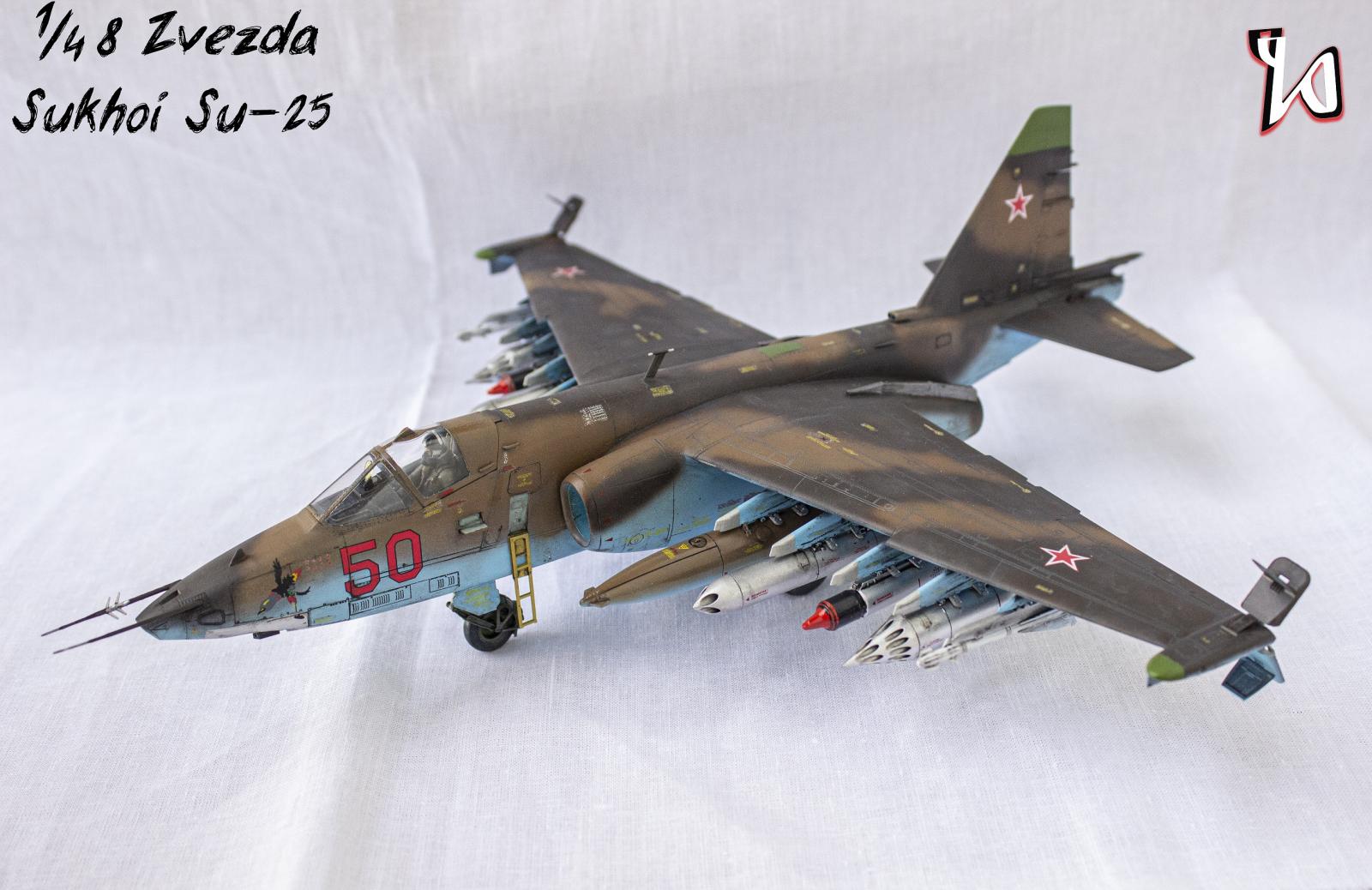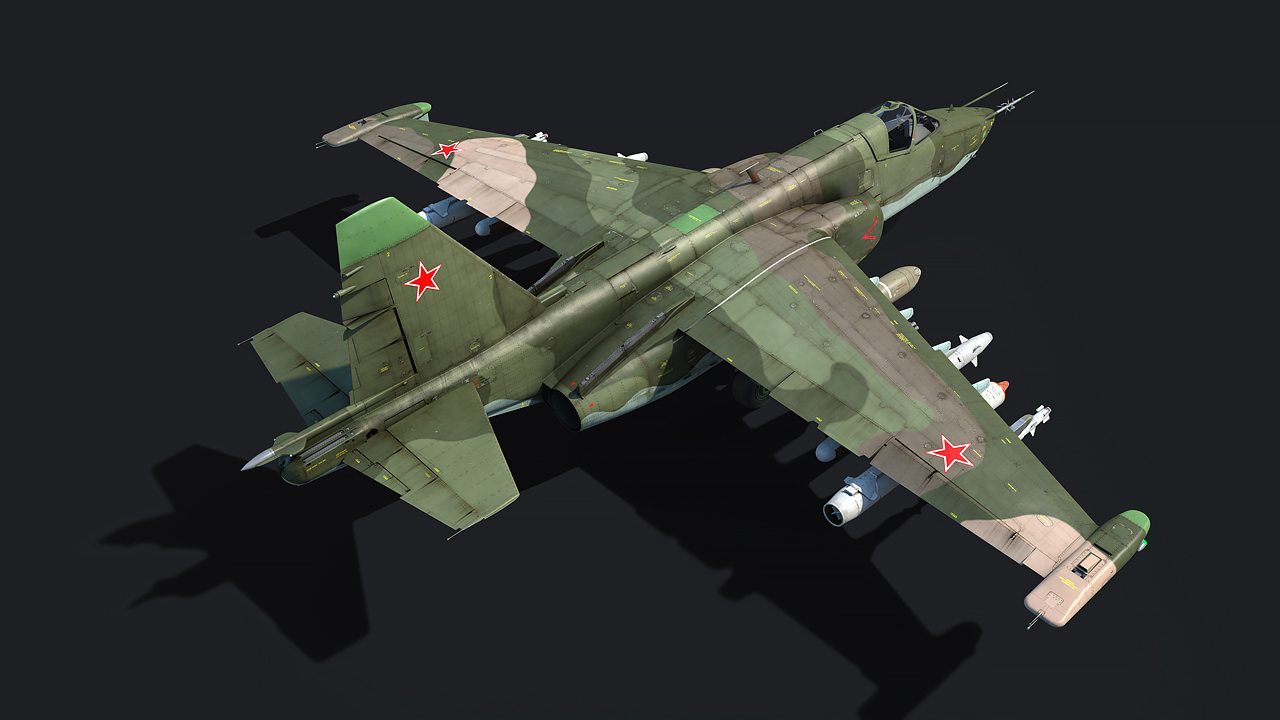Su 25 Gun - Su-25 Hrach (Russian: Грач (tower); name in NATO reports: Frogfoot) is a subsonic single-seat twin-engine jet aircraft developed in the Soviet Union by Sukhoi. It was intended for direct air support of the Soviet ground forces. The first prototype took off on February 22, 1975. After testing, the aircraft was put into serial production in 1978 in Tbilisi, Georgian SSR.
The first variants included the Su-25UB two-seater trainer, the Su-25BM for towing targets and the Su-25K for export customers. Some aircraft were upgraded to the Su-25SM standard in 2012. The Su-25T and Su-25TM (also known as the Su-39) were further developments that were not produced in significant numbers. The Su-25 and Su-34 were the only armored aircraft produced in 2007.
Su 25 Gun

The Su-25 is in service with Russia, other CIS countries and export customers. Production of the Su-25 in Russia ended in 2017
Meet The Su 25 Frogfoot: Russia's Most Battle Hardened Aircraft
Since entering service more than 41 years ago, the Su-25 has been involved in several conflicts. This type took an active part in the Soviet-Afghan war, carrying out counterinsurgency missions against the Afghan Mujahideen. The Iraqi Air Force deployed it against Iran during the 1980-88 Iran-Iraq War. Most of the Iraqi models were later destroyed or flown to Iran during the 1991 Persian Gulf War. The Georgian Air Force used the Su-25 during the 1992-1993 Abkhaz War. The Macedonian Air Force used the Su-25 against Albanian rebels in the Macedonian conflict in 2001 and 2008 Georgia and Russia used the Su-25 in the Russian-Georgian war. African states, including Ivory Coast, Chad and Sudan, have used the Su-25 in local insurgencies and civil wars. That's right, the Su-25 participated in the Russian intervention in the civil war in Syria, in the conflicts of the Nagorno-Karabakh War in 2020 and in the Russian invasion of Ukraine in 2022.
In early 1968, the Ministry of Defense of the USSR decided to develop a specialized armored attack aircraft "Sturmovik" for direct air support of the Soviet ground forces. The idea of creating a ground support aircraft arose after analyzing the experience of attack aircraft in the 40s, 50s and 60s of the 20th century.
At that time, the Soviet fighter-bombers (Su-7, Su-17, MiG-21 and MiG-23), which were in service or under development, did not meet the requirements of direct air support of the army.
They lacked basic armor to protect the pilot and vital equipment from ground fire and missile strikes, and their high flight speed made it difficult for the pilot to maintain visual contact with the target. Having considered these tasks, Pavel Sukhoi and a group of leading specialists of the Sukhoi Design Bureau in a relatively short time started sketching works with the participation of the leading institutes of Minaviaprom and the Ministry of Defense. .
Su 25 Vs A 10: Here's Why The Frogfoot Might Be Better Suited Than The Warthog For Cas
In March 1969, the Soviet Air Force announced a competition for the design of a new close support aircraft on the battlefield. KB Sukhoi and KB Yakaulev, Ilyushin and Mikayan became participants in the competition.
Sukhoi completed the T-8 project in late 1968 and began work on the first two prototypes (T8-1 and T8-2) in January 1972. The T8-1, the first airframe assembled, was completed on May 9, 1974. Other sources mention November 1974. However, he made his first flight only on February 22, 1975, after a long series of test flights by Vladimir Ilyushin. The Su-25 beat its main competitor in the competition, the Il-102 of the Soviet Air Force, and serial production was announced by the Ministry of Defense.
During the flight tests of the development of the T8-1 and T8-2 prototypes, the management of the Sukhoi Design Bureau proposed to start serial production of the Su-25 at Plant No. 1. 31 in Tbilisi of the Georgian Soviet Republic, which at that time was the main production base of the training and training MiG-21um. "Mongol-b". After negotiations and the completion of all stages of state tests, the Ministry of Aviation Production of the USSR authorized the production of the Su-25 in Tbilisi, which allowed the start of serial production in 1978.

In the late 1980s and early 1990s, several variants of the Su-25 appeared, including upgraded versions and variants for special tasks. The most famous projects were the Su-25UB two-seater trainer, the Su-25BM variant for towing targets and the Su-25T for anti-tank missions. In addition, the Su-25KM prototype was developed by Georgia in cooperation with the Israeli company Elbit Systems in 2001, but so far this variant has not achieved much commercial success. Since 2007
Flightgear Forum • View Topic
The Russian Air Force, which operates the largest number of Su-25s, had planned to upgrade the older aircraft to the Su-25SM variant, but a lack of funding slowed progress; in early 2007, only the aircraft line was modified.
The Su-25 has a conventional aerodynamic layout with a shouldered trapezoidal wing and traditional tail and rudder. The design of the airframe uses several metals: 60% aluminum, 19% steel, 13.5% titanium, 2% magnesium alloy and 5.5% other materials.
All modifications of the Su-25 have a metal cantilever wing with a small slope, a high aspect ratio and equipped with devices of increased lifting force. The wing consists of two cantilever sections mounted on a central torsion box, which form a single unit with the fuselage. Air brakes are located in fairings at the end of each wing. Each wing has five fixed weapon attachment points with the attachment points mounted on the support ribs and spars.
The flaps are attached using steel sliders and rollers mounted on brackets on the rear beam. Trapezoidal ailerons are located near the tips of the wings.
Striving For Physically Correct Visual Behavior In 3d Models
The Su-25 fuselage has an ellipsoidal cross-sectional shape and a semi-monocoque stressed structure, made in the form of a longitudinal support structure of stringers, beams and beams, with a transverse support node of the frames.
Early versions of the Su-25 were equipped with two R-95Sh jet engines without afterburner, located in compartments on the sides of the tail part of the fuselage. The pipes, assemblies and surrounding housing are cooled by air supplied by air intakes at the top of the engine nacelles. The drainage system collects oil, residual hydraulic fluid and fuel from the engines after flight or after a failed start. Genie management systems allow each genie to operate independently.
The automatic gun is located in the space above the cabin, mounted on a support beam attached to the floor of the cabin and the support structure of the nose of the fuselage. The front is fitted with the characteristic dual pitot probes and hinges for service access.

The pilot controls the aircraft using the control stick and the left throttle. The pilot sits in the Zvezda K-36 ejection seat (similar to the Su-27) and has standard flight instruments. At the rear of the cab is a six-millimeter (0.24 in) steel head restraint mounted on the rear bulkhead. The cockpit has an armored bathtub-shaped hull made of welded titanium sheets with through-holes in the walls. Guides for the ejector seat are attached to the back wall of the cabin.
Attack On Europe: Documenting Ukrainian Equipment Losses During The 2022 Russian Invasion Of Ukraine
The dome hinges open to the right, and the pilot moves on a folding ladder. Once inside, the pilot sits low in the cockpit, protected by a tub assembly, creating a tight cockpit. Visibility from the cockpit is limited, which is a trade-off for better pilot protection. Rear visibility is poor and a periscope is mounted on top of the dome to compensate.
A folding ladder built into the left fuselage provides access to the cockpit as well as to the top of the aircraft.
The base model of the Su-25 includes several key avionics systems. It does not have TV guidance, but does include a distinctive laser range finder mounted on the nose, which is believed to enable laser target acquisition.
The DISS-7 Doppler radar is used for navigation; Su-25 can fly at night, in visual and instrument meteorological conditions.
Su 25 By Grafdewolfgun On Deviantart
The Su-25 is often equipped with air-to-ground and air-to-air radios, including the SO-69 idtification-frid-or-foe (IFF) transponder. The aircraft's self-defense kit includes various tools, such as flare and flamethrower scatterers, capable of firing up to 250 flares and dipole flares. The enemy's use of the radar is protected from the SPO-15 radar warning receiver.
The new models of the Su-25TM and Su-25SM have improved avionics and a complex of weapons, which has led to increased survivability and combat capability.
The first Su-25 unit of the Soviet Air Force was the 80th Assault Aviation Regiment, formed in February 1981 at the Sitalchai Air Base in the Azerbaijan SSR.

On 19 July 1981, the 200th Separate Attack Squadron was transferred to Shindand Air Base in western Afghanistan, becoming the first Su-25 unit deployed to that country. Its main task was to carry out airstrikes on mountain military positions and structures controlled by Afghan insurgents.
A Russian Made Indian Air Force's Sukhoi 30 Aircraft Is Displayed During An Airshow On The Maiden Visit Of India's Defence Minister A. K. Antony To The Air Force Station In The Central Indian
Another Soviet Su-25 unit was the 368th Assault Aviation Regiment, which was established on July 12, 1984 in Zhavtnev, Ukraine.
During the Soviet-Afghan war, the Su-25 fired 139 guided missiles of all types at Mujahideen positions. On average, each aircraft flew 360 sorties per year, far more than any other combat aircraft in Afghanistan. By the end of the war, about 50 Su-25s were deployed at air bases in Afghanistan, which made a total of 60,000 sorties. Between the time of the first deployment in 1981 and the end of the war in 1989, 21-23 aircraft were lost in combat,
Su 25 manual, su-25 frogfoot, sukhoi su 25 frogfoot, su 25 1 144, su 25 model kit, su 25 sm, 1 48 su 25, su 25 flanker, su 25 tm, su-25, su 25, su 25 model
0 Comments